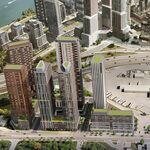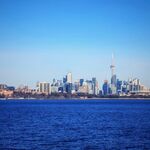I find it interesting as well that in major European cities, the massive expanse of transit exists, but these cities have induced massive sprawl at the same time, not to mention the construction of freeways around the city centre. Just look at London, Paris and Frankfurt for a few examples. Sure, as public transit expands and becomes more reliable, you will see a huge increase in ridership, but you can't deny the existence of drivers.
"Massive sprawl"?
Let's take London, which is considerably less dense than Paris.
London's statistical urban area covers 1,623 km², roughly comparable to the Toronto statistical urban area of 1,749 km². In that area Toronto has 4.7 million people; London packs in 8.5 mil.
London's footprint, though, hasn't much changed since the 1960s. A hard built boundary was imposed on it in the 1940s, and while there's been some leapfrogging the Greenbelt, there's little doubt London has stayed put. (The Toronto UA abuts directly against the Hamilton and Oshawa UAs, and doesn't include the likes of Milton, which will eventually glob onto the motherblob.)
Next, these alleged freeways "around the city centre." Yup, London has an orbital motorway, the M25. But it doesn't go around the "city centre." It basically circumscribes the whole built-up area. Look at it on
this map. In Toronto terms, it's considerably further out than the 407.
Not only that, but you'll note aside from the single ring, that's basically it for urban freeways in London. The initial tendrils of the few intercity routes that begin inside the orbital, like the M1 and the M4, still begin far from the city centre.
I'm sorry, but there's simply no comparison.
















